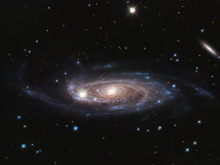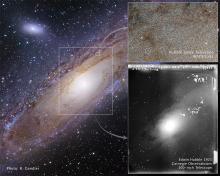Listen to today's episode of StarDate on the web the same day it airs in high-quality streaming audio without any extra ads or announcements. Choose a $8 one-month pass, or listen every day for a year for just $30.
You are here
Neptune at Opposition
A blue giant is putting on its best face this week. It’s in view all night, and it shines brightest for the year, too. Unfortunately, though, you still need a telescope to see it.
Neptune is the fourth-largest planet in the solar system. But it’s also the most remote of the Sun’s major planets, so it’s not easy to find.
In fact, Neptune was discovered not because of its brightness, but through its gravitational influence. Astronomers noticed some oddities in the orbit of Uranus, the next planet in toward the Sun. They determined that it was being pulled by another planet. They even calculated the other planet’s orbit. One astronomer then asked some colleagues to look for it. They did — and there it was.
At least three astronomers may actually have seen Neptune through telescopes well before then. But it looked like an ordinary star, so they didn’t pay much attention to it. If they’d looked again a few days after they first saw it, they would have noticed that it moved against the background of stars, revealing its true nature: a giant planet far from the Sun.
And this week, that giant lines up opposite the Sun in our sky. Because of that, it rises at sunset and is in view all night. It’s near the eastern edge of the stick-figure outline of Aquarius, the water bearer. Neptune is closest to Earth around opposition, too, so it shines at its brightest — a faint blue dot among the stars.
More about Neptune tomorrow.





